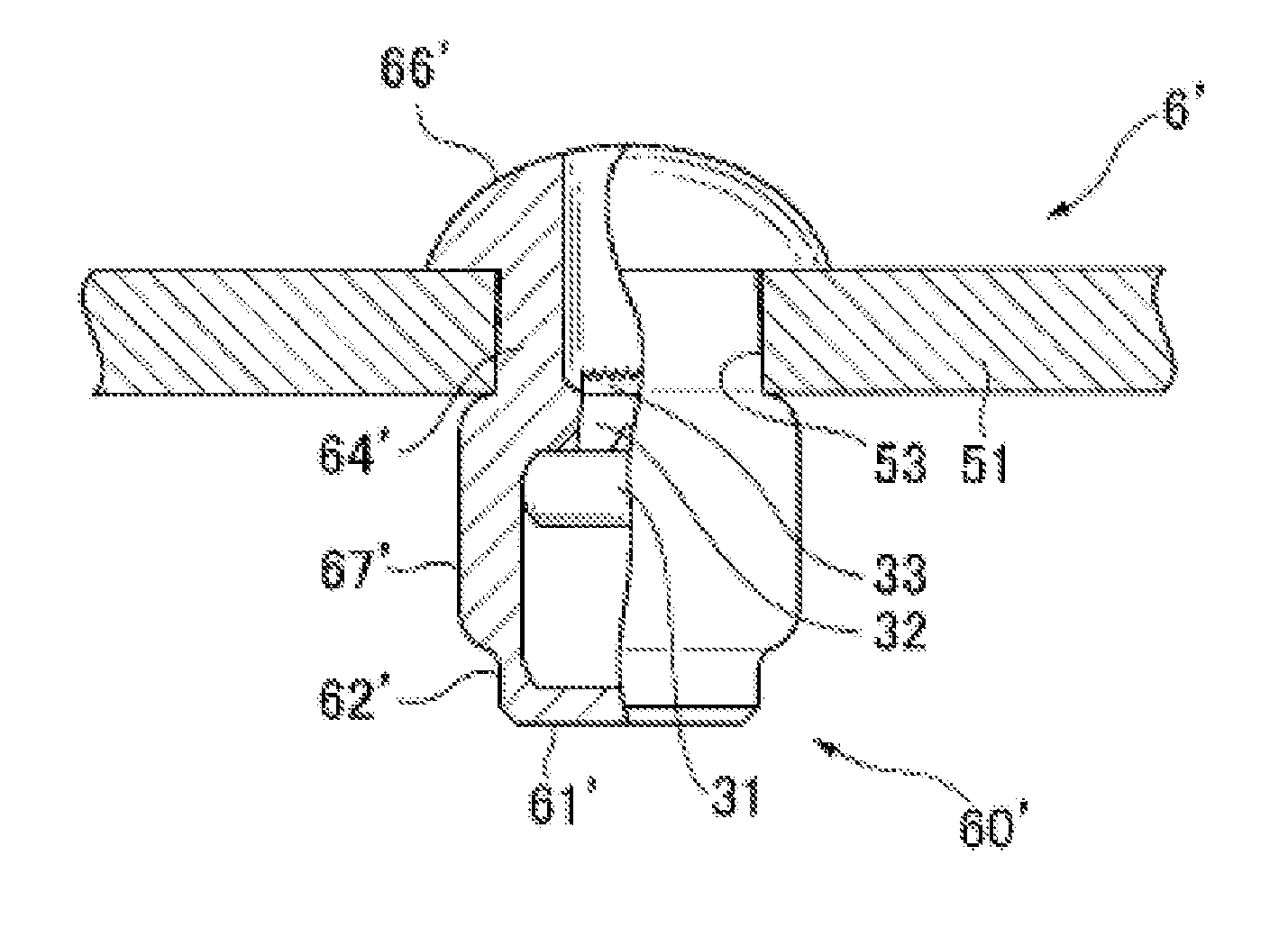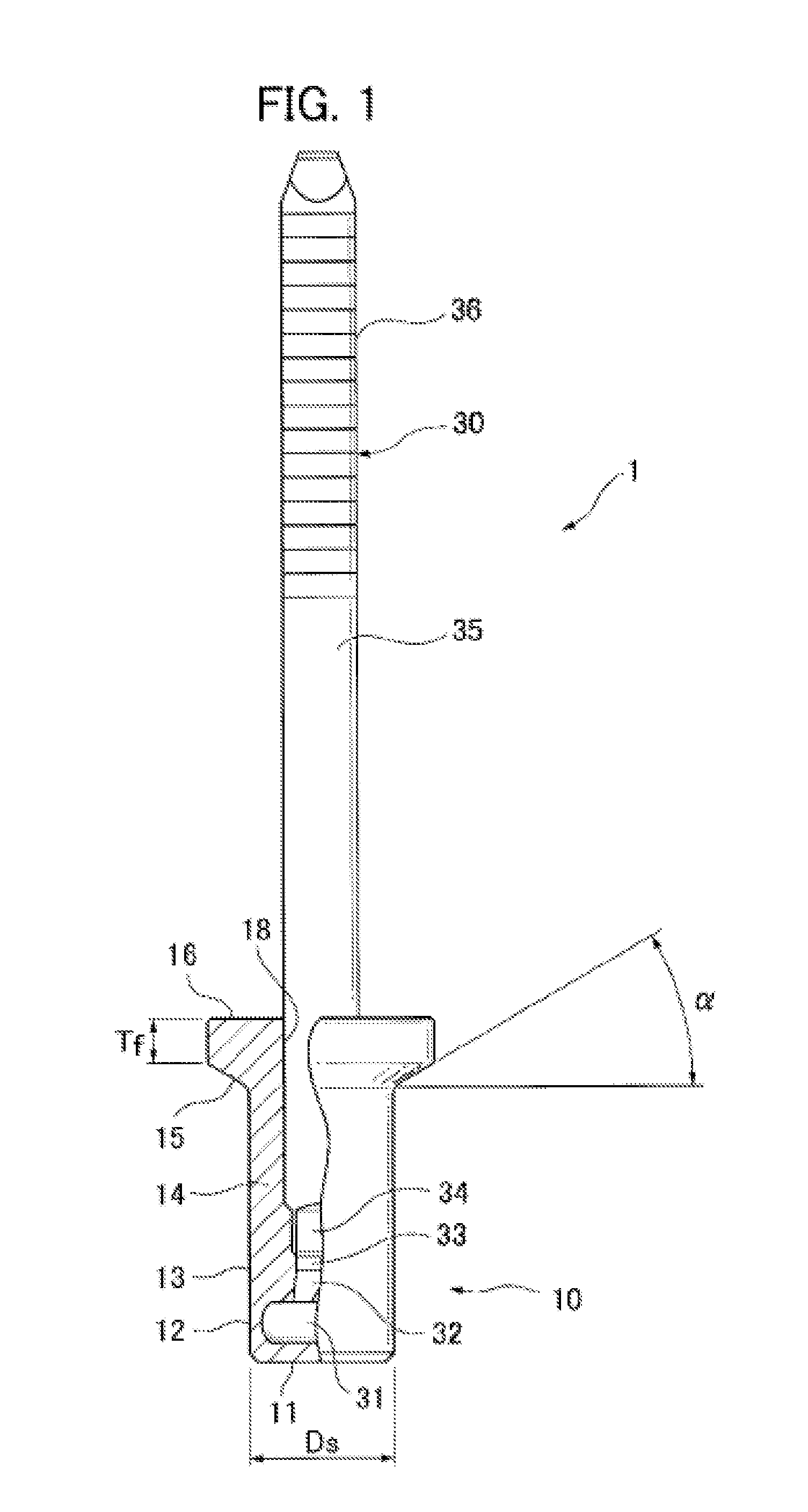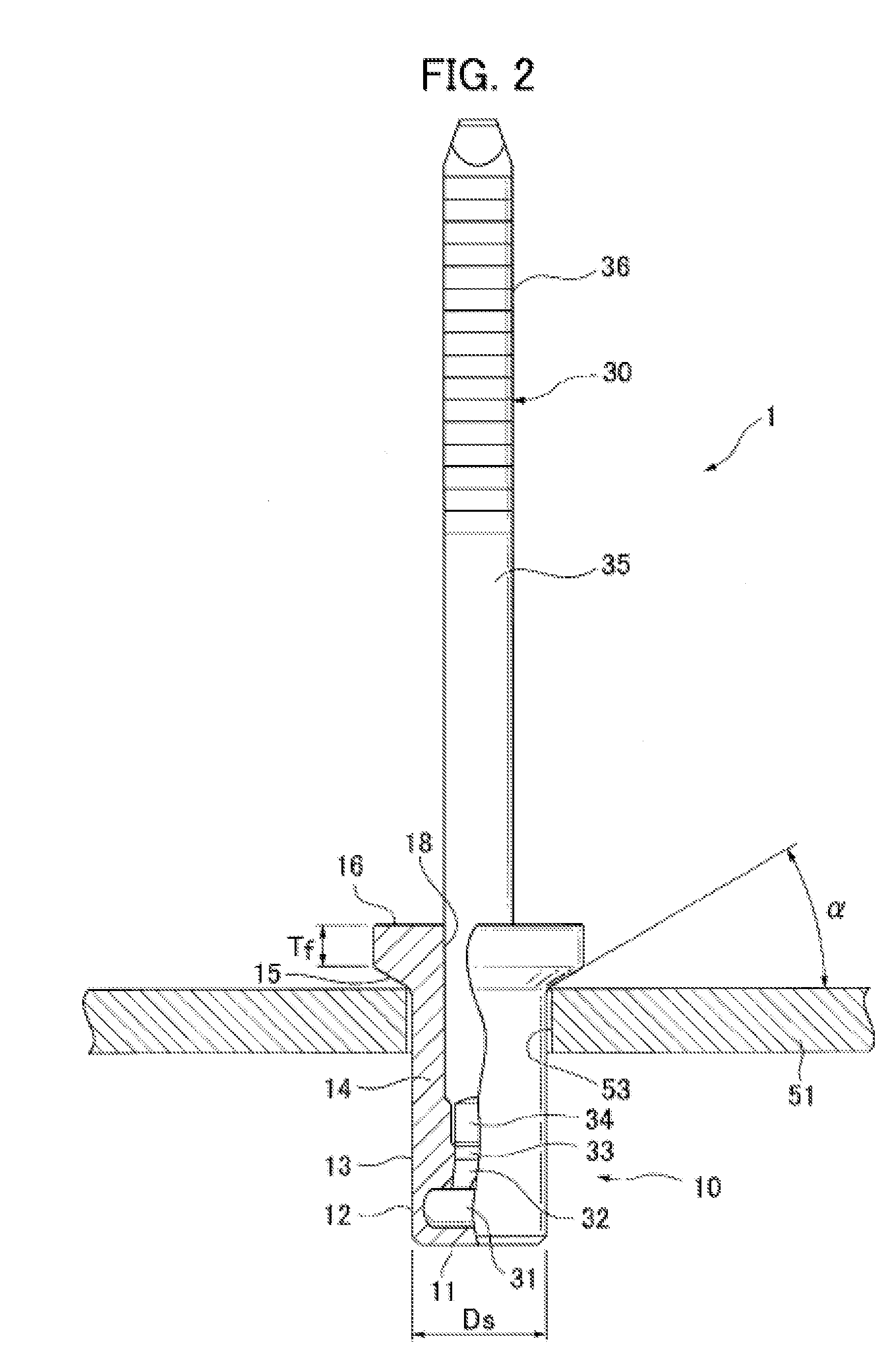Blind rivet and sealing structure using same
a blind rivet and sealing structure technology, applied in the field of blind rivets, can solve the problems of many parts, high cost, and insufficient watertightness of the open type of blind rivets, and achieve the effect of high degree of watertightness and sufficient sealing characteristics
Active Publication Date: 2015-07-09
NEWFREY
View PDF16 Cites 5 Cited by
- Summary
- Abstract
- Description
- Claims
- Application Information
AI Technical Summary
Benefits of technology
[0031]According to the invention, sufficient sealing characteristics are achieved with a
Problems solved by technology
The open type of blind rivet is not sufficiently watertight; it is easy for liquid to seep between the rivet main body and the remaining head of the mandrel because the remaining head of the mandrel is exposed after fastening.
However, because it uses a bottomed resinous sleeve besides a blind rivet, the number of parts will be many, and cost will be high.
However, this taper is provided with a small angle on the rivet main body, because it is assumed that it will overlap the hole for the plate rivet; if the variability of the inner diameter of the hole for the plate rivet is great, it is easy in the blind rivet of Koka
Method used
the structure of the environmentally friendly knitted fabric provided by the present invention; figure 2 Flow chart of the yarn wrapping machine for environmentally friendly knitted fabrics and storage devices; image 3 Is the parameter map of the yarn covering machine
View moreImage
Smart Image Click on the blue labels to locate them in the text.
Smart ImageViewing Examples
Examples
Experimental program
Comparison scheme
Effect test
 Login to View More
Login to View More PUM
 Login to View More
Login to View More Abstract
A blind rivet having sealing and water-tightness features. The blind rivet is fastenable to a member having an opening and includes a rivet body and mandrel. The rivet body has a flange having a large diameter, a taper portion which is adjacent the flange and a sleeve which extends along the axial direction from the taper portion. A hole having a bottom is formed from the surface of the flange to the bottom of the sleeve. The mandrel has a head. The head of the mandrel is disposed at the bottom portion of the hole. A thick portion is formed at a portion of the sleeve, and thus the head is irremovably held in the hole. The mandrel is pulled, the sleeve is enlarged, and a substrate is sealed between the enlarged portion and the flange. A sealing structure using the blind rivet is also provided.
Description
CROSS REFERENCE TO RELATED APPLICATIONS[0001]This application is a continuation of PCT / JP2013 / 077150, filed Oct. 4, 2013 which claims priority from Japanese Patent Application No. 2012-240006, filed Oct. 31, 2012, the disclosure of which is incorporated herein by reference in its entirety.TECHNICAL FIELD[0002]The invention concerns a blind rivet. In particular, it concerns a blind rivet and sealing structure using same that has a taper on the reverse side of the blind rivet with a high degree of mounting stress and can achieve sufficient water tightness with a single blind rivet.BACKGROUND ART[0003]Blind rivets that are provided with a metal rivet main body having a sleeve and a flange on one end of the sleeve, a head and a metal mandrel having a shaft extending from the head, are well known. An advantage of a blind rivet is that it can connect to a plurality of panels by working from just one side.[0004]A user would expect sufficient sealing and a high degree of water tightness bet...
Claims
the structure of the environmentally friendly knitted fabric provided by the present invention; figure 2 Flow chart of the yarn wrapping machine for environmentally friendly knitted fabrics and storage devices; image 3 Is the parameter map of the yarn covering machine
Login to View More Application Information
Patent Timeline
 Login to View More
Login to View More IPC IPC(8): F16B19/10
CPCF16B19/1054F16B19/008
Inventor MAKINO, TAKANORISAKODA, KANJI
Owner NEWFREY
Features
- R&D
- Intellectual Property
- Life Sciences
- Materials
- Tech Scout
Why Patsnap Eureka
- Unparalleled Data Quality
- Higher Quality Content
- 60% Fewer Hallucinations
Social media
Patsnap Eureka Blog
Learn More Browse by: Latest US Patents, China's latest patents, Technical Efficacy Thesaurus, Application Domain, Technology Topic, Popular Technical Reports.
© 2025 PatSnap. All rights reserved.Legal|Privacy policy|Modern Slavery Act Transparency Statement|Sitemap|About US| Contact US: help@patsnap.com



